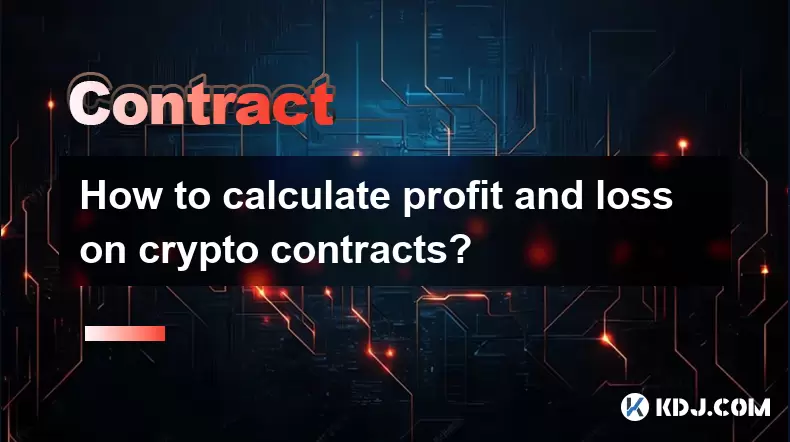-
 Bitcoin
Bitcoin $118100
-0.44% -
 Ethereum
Ethereum $3585
5.43% -
 XRP
XRP $3.434
5.65% -
 Tether USDt
Tether USDt $1.000
0.02% -
 BNB
BNB $743.8
3.89% -
 Solana
Solana $178.7
3.84% -
 USDC
USDC $1.000
0.03% -
 Dogecoin
Dogecoin $0.2381
12.81% -
 TRON
TRON $0.3270
3.62% -
 Cardano
Cardano $0.8315
4.93% -
 Hyperliquid
Hyperliquid $44.51
-4.42% -
 Stellar
Stellar $0.4710
1.52% -
 Sui
Sui $3.896
-2.51% -
 Chainlink
Chainlink $18.09
6.98% -
 Hedera
Hedera $0.2681
9.31% -
 Bitcoin Cash
Bitcoin Cash $516.7
4.83% -
 Avalanche
Avalanche $23.95
6.96% -
 Shiba Inu
Shiba Inu $0.00001490
5.67% -
 UNUS SED LEO
UNUS SED LEO $8.966
0.80% -
 Toncoin
Toncoin $3.294
4.39% -
 Litecoin
Litecoin $105.4
4.69% -
 Polkadot
Polkadot $4.356
5.30% -
 Uniswap
Uniswap $10.29
17.25% -
 Monero
Monero $327.9
-3.04% -
 Bitget Token
Bitget Token $4.942
4.33% -
 Ethena USDe
Ethena USDe $1.001
0.08% -
 Pepe
Pepe $0.00001348
2.17% -
 Dai
Dai $1.000
0.02% -
 Aave
Aave $320.8
0.58% -
 Bittensor
Bittensor $411.8
-4.07%
How to calculate profit and loss on crypto contracts?
Understanding crypto contract PnL requires tracking entry/exit prices, position size, leverage, and fees, with calculations differing for realized vs. unrealized gains or losses.
Jul 13, 2025 at 04:36 pm

Understanding Crypto Contract Basics
To calculate profit and loss on crypto contracts, it's essential to understand what crypto futures or perpetual contracts are. These financial instruments allow traders to speculate on the price of cryptocurrencies without owning the underlying asset. Contracts can be either long positions (buying) or short positions (selling), depending on whether you expect the price to rise or fall.
Each contract has specific parameters such as leverage, entry price, exit price, and position size. Leverage enables traders to control larger positions with a smaller amount of capital, but it also amplifies both gains and losses. Before diving into calculations, make sure you're familiar with these terms and how they influence your trade outcomes.
Key Components in Profit and Loss Calculation
The calculation of profit and loss (PnL) in crypto contracts depends on several key factors:
- Entry Price: The price at which you opened your position.
- Exit Price: The price at which you closed your position.
- Position Size: The number of contracts or units traded.
- Contract Multiplier: Some exchanges use a multiplier to determine the value of one contract.
- Fees: Trading fees, funding fees (for perpetual contracts), and other costs must be subtracted from your net profit or added to your loss.
These variables form the foundation of any PnL calculation and should be carefully tracked for accurate results.
Calculating Unrealized Profit and Loss
Unrealized PnL refers to the current profit or loss while your position is still open. To compute this, follow these steps:
- Determine the difference between current market price and entry price.
- Multiply that difference by the number of contracts or units held.
- If applicable, multiply by the contract multiplier.
- Subtract or add any fees incurred so far, such as funding fees.
For example, if you entered a long position at $30,000 on Bitcoin and the current price is $31,000, with a position size of 2 BTC contracts and a multiplier of $1 per contract, your unrealized profit would be calculated as follows:
(31,000 - 30,000) × 2 × $1 = $2,000.
Realized Profit and Loss After Closing a Position
Once you close your position, your PnL becomes realized. Here’s how to calculate it accurately:
- Identify the entry and exit prices of your trade.
- Calculate the price difference (exit price minus entry price).
- Multiply that difference by the position size.
- Multiply again by the contract multiplier if applicable.
- Deduct all trading fees including opening and closing fees, and any funding fees during the holding period.
Let’s say you opened a short position on Ethereum at $2,000, closed it at $1,900, and traded 5 ETH contracts with a $1 multiplier. The realized profit would be:
(2,000 - 1,900) × 5 × $1 = $500. Then subtract any fees, for instance, $10 total fees, leaving a net profit of $490.
Using Tools and Platforms for Accurate Calculations
Many traders rely on exchange platforms or third-party tools to automate their PnL calculations. Most major exchanges like Binance, Bybit, and OKX provide built-in dashboards that display:
- Real-time unrealized PnL
- Historical realized PnL
- Breakdown of fees
- Position details including leverage and liquidation price
Some advanced traders use external calculators or Excel templates where they manually input each trade’s data. These templates often include formulas that automatically compute PnL based on entry, exit, size, and fees. Ensure that any tool you use supports the specific contract specifications of your exchange.
Frequently Asked Questions (FAQs)
Q: Does the type of crypto contract affect how I calculate PnL?
Yes, different types of contracts—such as inverse contracts (denominated in crypto) versus linear contracts (denominated in fiat or stablecoins)—have varying PnL calculation methods due to differences in settlement currency and multipliers.
Q: How do funding fees impact my PnL in perpetual contracts?
Funding fees are periodic payments made to maintain overnight positions in perpetual contracts. These fees can be positive or negative depending on market conditions and can significantly affect your overall profit or loss over time.
Q: What happens to PnL when using stop-loss or take-profit orders?
Stop-loss and take-profit orders help manage risk and lock in profits automatically. When triggered, these orders close your position at a predefined price, allowing you to calculate PnL based on the triggered exit price rather than a manual close.
Q: Can I calculate PnL across multiple trades on the same asset?
Yes, you can aggregate PnL across multiple trades by summing up the individual profits and losses. However, ensure that each trade’s fees, leverage, and contract settings are consistent or adjusted accordingly for an accurate total.
Disclaimer:info@kdj.com
The information provided is not trading advice. kdj.com does not assume any responsibility for any investments made based on the information provided in this article. Cryptocurrencies are highly volatile and it is highly recommended that you invest with caution after thorough research!
If you believe that the content used on this website infringes your copyright, please contact us immediately (info@kdj.com) and we will delete it promptly.
- Freedom Gold Pack: The Legacy Coin Defining 2025
- 2025-07-19 06:30:13
- Trump, the GENIUS Act, and Stablecoin Regulations: A New Era for Crypto?
- 2025-07-19 06:50:12
- Pi Network's Ecosystem Challenge: App Studio Sparks Innovation
- 2025-07-19 06:55:13
- Zebec Network's Bullish Engulfing Pattern: Price Forms and Future Outlook
- 2025-07-19 06:30:13
- XRP, Ripple, Bitcoin, Ethereum: Decoding the Crypto Landscape
- 2025-07-19 05:50:13
- Penny Altcoins Eyeing $1 in Q3 2025: Cardano, BlockchainFX, and the Hunt for Crypto Gold
- 2025-07-19 05:10:13
Related knowledge

What is a maker vs a taker fee?
Jul 19,2025 at 01:14am
Understanding the Basics of Cryptocurrency Exchange FeesIn the world of cryptocurrency trading, maker vs taker fees are a fundamental concept that eve...

What is a partial liquidation?
Jul 19,2025 at 01:49am
Understanding the Basics of Partial LiquidationIn the world of cryptocurrency trading, especially within leveraged positions, partial liquidation refe...

Example of a Bitcoin futures trade
Jul 19,2025 at 12:43am
Understanding Bitcoin Futures TradingBitcoin futures trading is a financial instrument that allows investors to speculate on the future price of Bitco...

Can US citizens trade on Bybit or Binance futures?
Jul 18,2025 at 10:14pm
Understanding the Legal Status of US Citizens on Global Crypto ExchangesThe question of whether US citizens can trade on Bybit or Binance futures is o...

Understanding Bitcoin options contracts
Jul 18,2025 at 10:56pm
What Are Bitcoin Options Contracts?Bitcoin options contracts are financial derivatives that allow traders to speculate on the future price of Bitcoin ...

What are the risks of trading Bitcoin contracts?
Jul 19,2025 at 03:49am
Market Volatility and Price FluctuationsTrading Bitcoin contracts involves exposure to extreme market volatility, which is one of the most significant...

What is a maker vs a taker fee?
Jul 19,2025 at 01:14am
Understanding the Basics of Cryptocurrency Exchange FeesIn the world of cryptocurrency trading, maker vs taker fees are a fundamental concept that eve...

What is a partial liquidation?
Jul 19,2025 at 01:49am
Understanding the Basics of Partial LiquidationIn the world of cryptocurrency trading, especially within leveraged positions, partial liquidation refe...

Example of a Bitcoin futures trade
Jul 19,2025 at 12:43am
Understanding Bitcoin Futures TradingBitcoin futures trading is a financial instrument that allows investors to speculate on the future price of Bitco...

Can US citizens trade on Bybit or Binance futures?
Jul 18,2025 at 10:14pm
Understanding the Legal Status of US Citizens on Global Crypto ExchangesThe question of whether US citizens can trade on Bybit or Binance futures is o...

Understanding Bitcoin options contracts
Jul 18,2025 at 10:56pm
What Are Bitcoin Options Contracts?Bitcoin options contracts are financial derivatives that allow traders to speculate on the future price of Bitcoin ...

What are the risks of trading Bitcoin contracts?
Jul 19,2025 at 03:49am
Market Volatility and Price FluctuationsTrading Bitcoin contracts involves exposure to extreme market volatility, which is one of the most significant...
See all articles

























































































